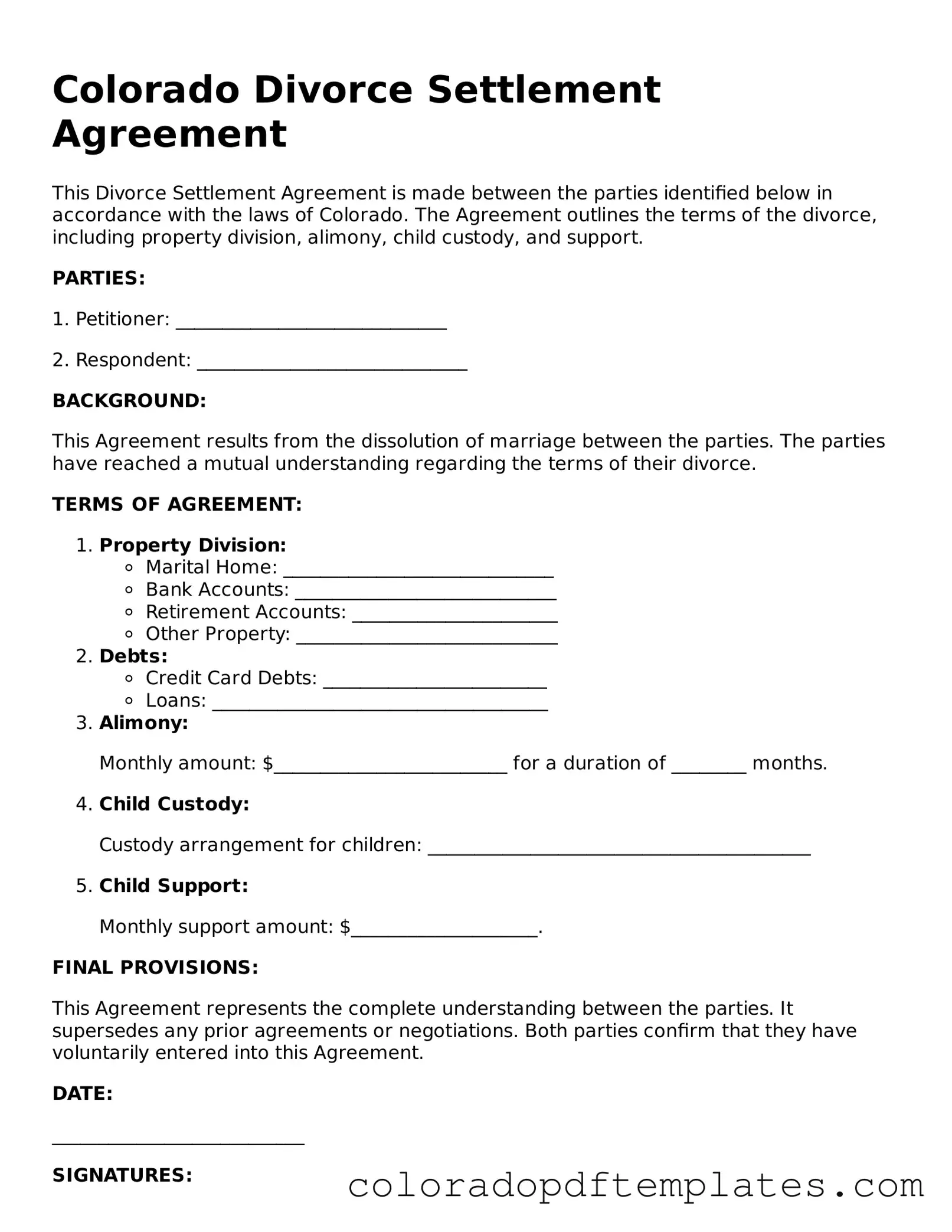Blank Divorce Settlement Agreement Template for Colorado State
The Colorado Divorce Settlement Agreement form is a legal document that outlines the terms of a divorce settlement between two parties. This agreement covers various aspects such as property division, child custody, and support arrangements. Understanding this form is crucial for ensuring that both parties are on the same page and that their rights are protected during the divorce process.
Make This Divorce Settlement Agreement Online
